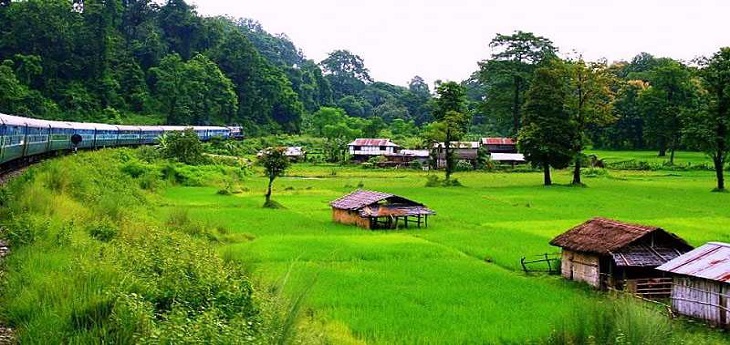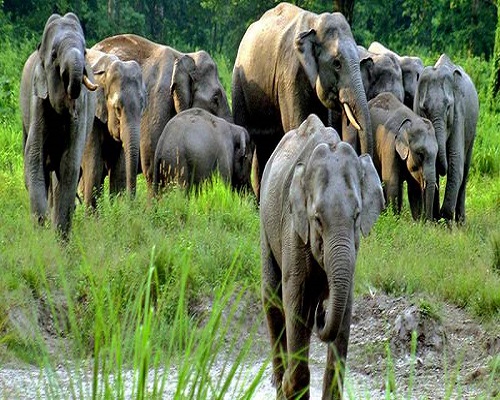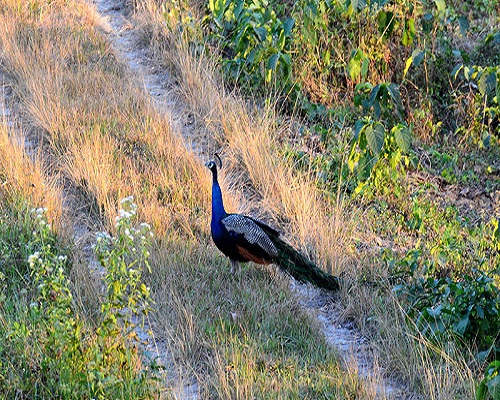Dooars Destination
Home Dooars Destination
Home Dooars Destination

The Dooars or Duars are the alluvial floodplains in northeastern India that lie south of the outer foothills of the Himalayas and north of the Brahmaputra River basin. This region is about 30 km wide and stretches over about 350 km from the Teesta River in West Bengal to the Dhanshiri River in Assam.

Jaldapara National Park (formerly Jaldapara Wildlife Sanctuary) is a national park situated at the foothills of the Eastern Himalayas in Alipurduar District of northern West Bengal and on the banks of the Torsa River. Jaldapara is situated at an altitude of 61 m and is spread across 216.51 km2 (83.59 sq mi) of vast grassland with patches of riverine forests. It was declared a sanctuary in 1941 for protection of its great variety flora and fauna. Today, it has the largest population of the Indian one horned rhinoceros in the state, an animal threatened with extinction, and is a Habitat management area (Category IV).The nearby Chilapata Forests is an elephant corridor between Jaldapara and the Buxa Tiger Reserve. Near by is the Gorumara National Park, known for its population of Indian rhinoceros.

Lataguri is a small town located in the Jalpaiguri district of Indian state of West Bengal.[1] The village is located outside the Gorumara National Park on National Highway No. 31. Permits for entering Gorumara and Chapramari Wildlife Sanctuary are given from Lataguri. The village also contains a "Nature Interpretation Center", which gives information about the flora and fauna of the area. A few roadside restaurants ("Dhabas") and hotels cater for tourists. Cooch Behar is a flat country with a slight southeastern slope along which the main rivers of the district flow. Most of the highland areas are in the Sitalkuchi region and most of the low-lying lands lie in Dinhata region. The flora here includes among others palms, bamboos, creepers, ferns, orchids, aquatic plants, fungi, timber, grass, vegetable and fruit trees.

It was declared as a National Park in the year 1992. Earlier in the year 1949 it was known as a wildlife sanctuary, river Murti, Jaldhaka and Ingdong drains this park forming a water body known for birding. This national park is famous for the breeding of the rare one - horned rhinoceros. Elephant ride and Jeep safari can help you spot the mighty bison, leopard or spotted deer and peacocks. The other mammals found here are, sambar, hog deer, reptiles, huge wild tuskers, wild boars and the rarest variety of animals and birds. It is a paradise for lovers of nature and adventurer. Nearby there are many a spot to visit. Watchtowers at Chuk chuki, and Jatra Prasad, Toto Para, Jaldapara, Dhupi Jhora, Bindu, Samsing, Rocky Island, Suntaley Khola, Buxar Tiger reserve, Cooch Behar etc are some of the places of Interest. Chapramari amidst of forests.

Murti is a river that originates in the Neora Valley National park and flows through prime tourism area of Dooars before meeting Jaldhaka river. The river reaches the plains at Samsing, further inside Dooars, it divides the continuous stretch of forest of Gorumara. The forest on the left bank being called Chapramari and the forest on the right bank known as Gorumara. Further downstream, it meets river Jaldhaka and enters Bangladesh near Mathabhanga. Inside Bangladesh the Jaldhaka river meets the mighty Brahmaputra.From its origin till it meets Jaldhaka river, Murti is about 80 kms in length. The river is famous due to the number of tourist destinations on its both banks. Almost the entire stretch of the river is dotted with tourist spot with a number of resorts, forest bungalows, picnic spots sprawling besides it. The most famous watchtowers of Gorumara National Park such as Chukchuki, Medla and Jatraprasad are all located overlooking river Murti.

This tiger reserve forest abounds in a fascinating diversity of flora and fauna. The surrounding region is home to the tribes like Mech, Rava, Oraon, Munda, Kora and even the smallest surviving tribe, the Toto. It is one of the reserve forests stretching to Bhutan as Phipsu reserve and to Rasikbill near Cooch Behar and is drained by rivers like Sankosh, Raidak, Jayanti, Churnia, Turturi, Phashkhawa, Dima and Nonani. Elephants and leopard can be spotted very frequently. A small pond, locally known as pokhri on hilltop with innumerable numbers of tortoise is a treat to watch. Declared as National Park in January 1992 and is well maintained with an orchid house and leopard rehabilitation centre.

Chilapata Forest falls are a great treat to watch on the way to Cooch Behar from Jaldapara. This is another dense forest with elephants and leopards. But, be warned, the most dangerous inhabitants of the forest are armed robbers! In fact, less than three vehicles are not allowed into the forest at any given time for security reasons. The prime reason for hazarding such a trip would be to visit the 5th century CE Nal or Mendabari Fort, mentioned in Marco Polo’s travelogue.